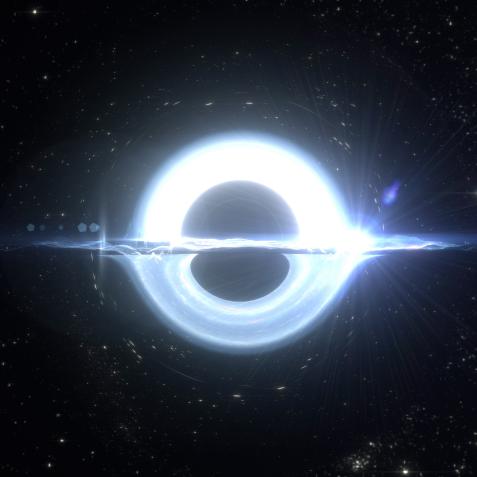
NASA
What Do Pulsar Waves Tell Us About the Universe?

Using a network of dead stars, astronomers get closer to seeing the background ripples of the universe.
By meticulously observing 47 pulsars – the leftover hunks of giant stars – astronomers have measured tiny variations in their signals, which they suspect are caused by the passage of ripples in the fabric of spacetime itself.
I want you to think of a vast, dark sea, stretching to the horizon. All across that sea are countless ripples – waves washing back and forth, sometimes amplifying each other. Occasionally a giant wave will pass by, only for the sea to return to its normal rhythms.

SXS/NASA
Artist's impression a neutron star merger and the gravitational waves it creates.
Our planet is awash in a sea of spacetime, the fundamental fabric of the universe. But like that dark ocean, spacetime can carry waves – waves of gravity. These gravitational waves stretch and shrink objects as they pass by, and are caused by innumerable cataclysmic events throughout the universe: stars dying, black holes colliding, and worse. Just like the sea, we can’t see what causes the waves themselves; we can only watch as they wash ashore.
So far we’ve only been able to detect the largest, most powerful of the gravitational waves. That’s because gravity is by far the weakest of the forces of nature, and gravitational waves are weaker still. When two black holes collide, for example, the gravity could tear you in half…but by the time the waves reach the Earth, they can barely nudge an atom.
But we know that the dark sea is out there, rippling and undulating with thousands of undetectable waves.

NASA/Goddard Space Flight Center
In this artist’s conception, a binary black hole produces gravitational waves that travel outwards and carry energy away from the system.
To find them, a team of astronomers developed the North American Nanohertz Observatory for Gravitational Waves, or NANOGrav. NANOGrav doesn’t hunt for gravitational waves directly, but by watching for the subtle effects they have throughout the cosmos.
Imagine on that dark sea you placed a network of buoys, each one flashing a light at you. As the waves rolled by each buoy, the light would change, if only a little. By carefully observing the pattern of changes in the light from the buoys, you could reconstruct the unseen waves on the surface of the sea.
In the universe we don’t have buoys, but we do have pulsars. Pulsars are the ultra-dense cores of giant stars, left behind when the rest of the star goes supernova. Pulsars spin incredibly fast – up to several hundred times per second – and emit beams of radiation that circle through the universe. When those circles intersect the Earth, we get regular repeated flashes of light – pulses.
The NANOGrav team observed 47 pulsars over the course of years, looking for any tiny variations in their signals. The thinking goes that when a gravitational wave passes by a pulsar, it can minutely affect its pulses. It’s only a tiny variation, but potentially a detectable one.

NANOGrav/T. Klein/NASA
This illustration shows the NANOGrav project observing cosmic objects called pulsars in an effort detect gravitational waves – ripples in the fabric of space. The project is seeking a low-level gravitational wave background signal that is thought to be present throughout the universe.
Recently, the NANOGrav team announced a major milestone: accounting for all possible sources of pulsar variation, they think they’ve finally spotted the signal from gravitational waves. They’re not done yet, though, because they’re not 100% sure this is the right signal. For example, the signals from the pulsars should be correlated, or related to each other (like if the same gravitational wave passes by multiple pulsars, they should change at the same time).
Still, it’s a major announcement. Further work should solidify the result, and by carefully watching these interstellar buoys, we can begin to reconstruct the gravitational waves sloshing throughout the cosmos…and understand their origins.



















